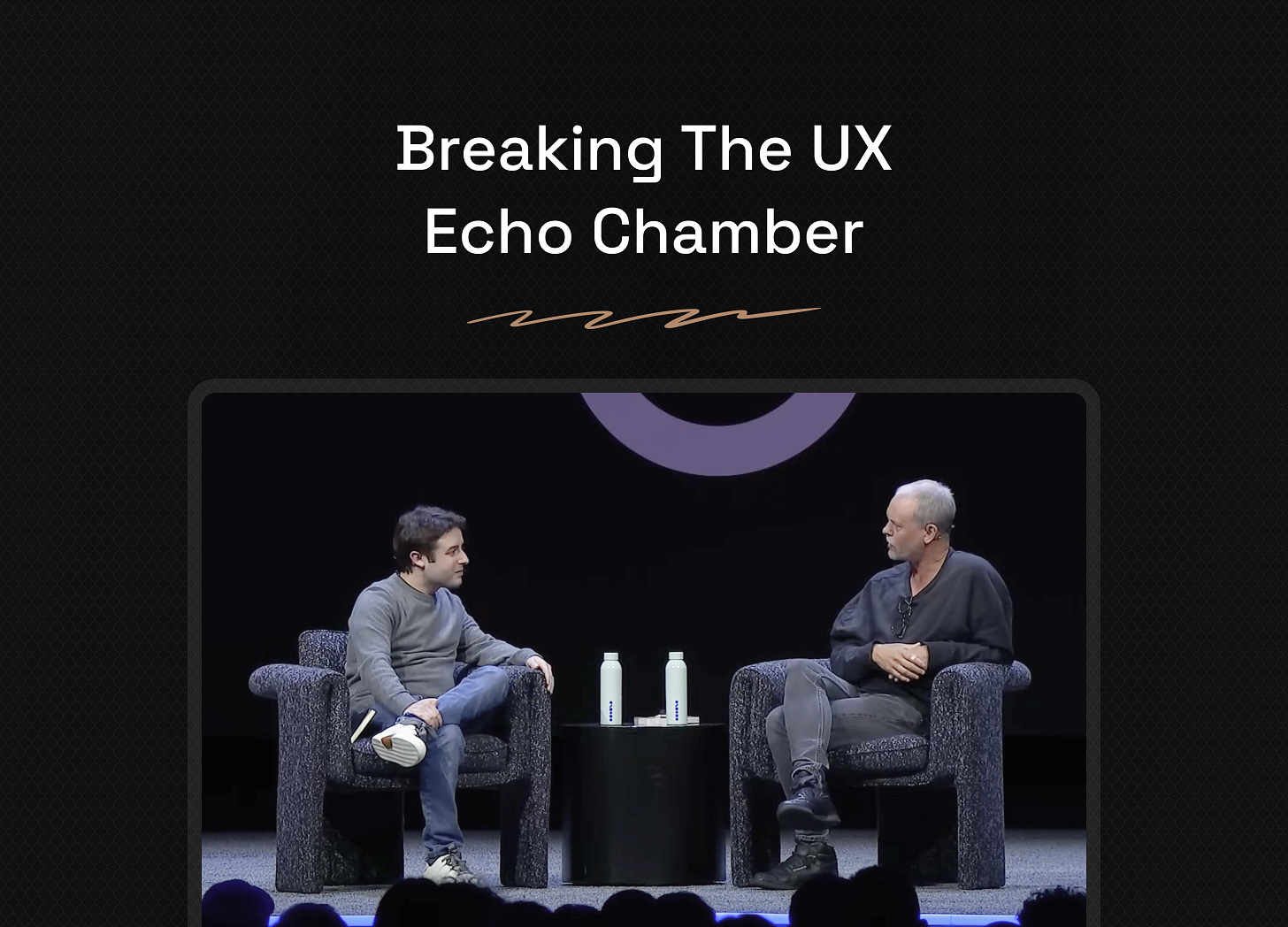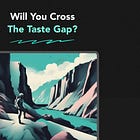Outside the UX Echo Chamber
A CEO's candid response shakes Figma's conference
Welcome to Unknown Arts, where we explore the creative power of art and technology. Ready to forge ahead into the unknown? Join the journey!

At Figma's recent Config conference, a brief exchange between two industry leaders sparked an unexpected moment of reflection:
Dylan Field (Figma CEO): "Do you believe in user testing? Or user research?" Jesper Kouthoofd (Teenage Engineering CEO): "No."
The audience's reaction — a mix of cheers, laughter, and palpable surprise — spoke volumes about the state of tech’s design industry.
In a world where user-centered design has become gospel, Kouthoofd's blunt rejection of a core tenet felt both jarring and oddly refreshing.
But why did this resonate so strongly? Let's unpack the layers:
1. Authenticity in a Sea of Conformity
In the tech industry, and particularly in Silicon Valley, there's an unspoken script that leaders are expected to follow. User-centric design, data-driven decisions, and customer obsession are the accepted talking points.
Hit your mark, say your lines, and get off stage before anyone can criticize you.
Kouthoofd's candor shattered this veneer of conformity, offering a stark contrast to the carefully crafted, risk-averse narratives typically heard from tech design leaders.
Teenage Engineering, known for its innovative and often quirky audio products, operates outside this bubble. It’s a small, privately-owned company with few external investors based in Sweden.
This literal and metaphorical distance from the tech industry allows Kouthoofd the freedom to speak his mind without fear of alienating investors or running afoul of industry dogma.
His authenticity is a breath of fresh air in an environment where cautious, PR-approved statements are the norm.
2. The Data-Driven Design Dilemma
Many designers find themselves caught in a tug-of-war between data and intuition.
Design is a highly intuitive discipline, yet tech’s unrelenting demand for data-driven decisions has made it dangerous to speak your mind in support of intuitive choices.
While user testing and research provide valuable insights, there's a growing concern that over-reliance on these methods can stifle creativity and lead to homogenized designs.
It’s not dissimilar to the way great film scripts get “noted to death” by Hollywood executives on their way to production. The unique vision of a new creative solution becomes so diluted by data-supported consensus that it loses its original impact and appeal.
Kouthoofd's stance resonates with designers who've felt the frustration of having their vision weakened by endless rounds of testing and iteration.
It raises a crucial question: In our quest to please everyone, are we risking creating products that truly excite no one?
3. Breaking Free from Design Dogma
The UX industry has developed its own set of commandments over the years.
"Thou shalt always test."
“Thou shalt follow the data.”
"Thou shalt design for the user, not for thyself."
Etc…
While these principles often lead to good outcomes, they can also create a rigid mindset that leaves little room for revolutionary ideas.
It’s a cargo cult in the name of improving user experience that stops innovation in its tracks.
Kouthoofd's rejection of user testing isn't necessarily a call to abandon the practice altogether. Instead, it's a reminder to think for yourself.
The most impactful designs often come from a place of vision and intuition rather than data and consensus.
The Power of Contrarian Thinking
It's important to note that Kouthoofd's success doesn't come from randomly bucking trends. Teenage Engineering's products are beloved because they solve real problems for niche audiences, in unique, delightful ways.
Embracing contrarian thinking doesn't mean rejecting all established practices. Instead, it's about cultivating the courage to question assumptions, even widely accepted ones, and being open to unconventional solutions that might better serve your specific audience or problem space.
As we move forward, the challenge for the design community is to create an environment where both proven conventions and audacious creativity can coexist.
We need to:
Broaden our perspectives: Seek out and value voices from outside the traditional tech bubble.
Balance data with intuition: Use research as a tool, not a crutch. Trust in the expertise and vision of skilled craftspeople.
Encourage calculated risks: Create space for bold ideas that might not test well initially but have the potential to redefine categories.
Redefine success metrics: Look beyond immediate user reception to long-term impact and innovation.
Final Thoughts
Kouthoofd's "no" is a reminder that the most impactful innovations often come from challenging the status quo.
The future of design is neither fully data-driven nor entirely intuitive.
It’s an ever-changing blend between the two and it’s our job as creative leaders to discover the unique sweet spot where both can thrive.
It's in this balance that we'll uncover the next generation of products that users didn't even know they needed — but won't be able to live without.
Sometimes the most powerful creative act starts with a simple, contrarian "no."
Until next time,
Patrick
If you got a little value from this post, consider subscribing or sharing. Follow me on LinkedIn or X for more.




